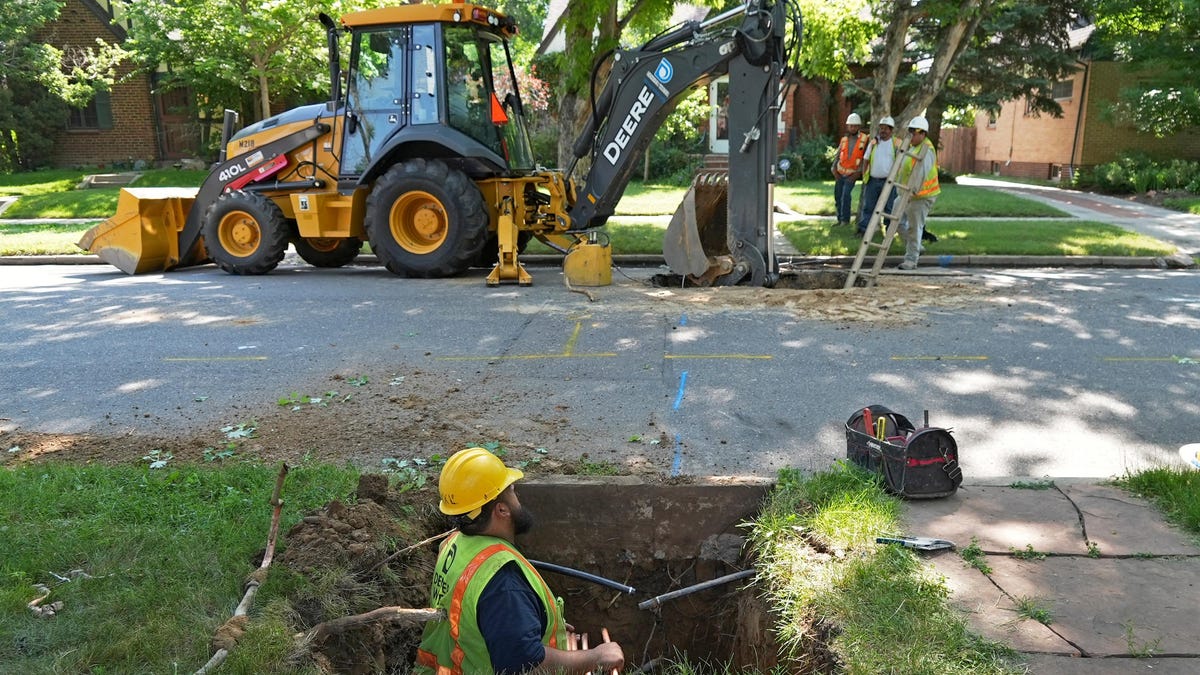The Arms Race in Higher Education: Penn States 700m Plan Signals An Intensifying Facility Arms Race

The pursuit of excellence in higher education often manifests in a fierce competition for resources, particularly in the realm of facilities. Universities, driven by a desire to attract top students, faculty, and research funding, are increasingly engaged in an arms race to construct state-of-the-art buildings, labs, and amenities. This trend, fueled by a confluence of factors, has led to a significant surge in capital projects at major universities across the globe.
Historical Context and Motivations, Penn states 700m plan signals an intensifying facility arms race
The history of facility investments in higher education is intertwined with the evolution of academic priorities and societal expectations. Early universities were primarily focused on teaching and scholarship, with facilities reflecting these core functions. As research became increasingly central to the academic mission, universities began investing in specialized labs and research centers. This trend accelerated in the latter half of the 20th century, driven by the Cold War and the burgeoning space race, which emphasized scientific advancements and technological innovation.
Comparison with Past Expansion Periods
The recent surge in capital projects at major universities is unprecedented in scale and scope, exceeding past periods of expansion. For example, in the 1960s and 1970s, many universities experienced significant growth in enrollment, leading to the construction of new dormitories, classrooms, and administrative buildings. However, the current wave of construction goes beyond mere expansion; it involves the creation of highly specialized and technologically advanced facilities, often exceeding the needs of the student body.
Factors Driving the Arms Race
Several factors contribute to this renewed emphasis on facilities:
- Competition for students: Universities are increasingly vying for a limited pool of high-achieving students. State-of-the-art facilities, such as cutting-edge athletic centers, luxurious student housing, and innovative learning spaces, have become key differentiators in attracting top talent.
- Research funding: The pursuit of prestigious research grants and contracts requires access to sophisticated equipment and facilities. Universities are investing heavily in research labs, data centers, and specialized equipment to attract top researchers and secure funding for groundbreaking projects.
- Prestige and reputation: Universities view their physical infrastructure as a reflection of their prestige and reputation. Iconic buildings, world-class libraries, and aesthetically pleasing campuses enhance the university’s brand image and attract potential students, faculty, and donors.
Penn State’s $700 Million Plan

Penn State University has unveiled a bold $700 million plan to enhance its facilities, aiming to elevate its standing as a leading research institution. The plan encompasses a wide range of projects, from modernizing existing buildings to constructing new ones, all with the goal of fostering innovation and attracting top talent. This ambitious endeavor signifies a significant commitment to the future of Penn State and its role in the global academic landscape.
Projects Included in the Plan
Penn State’s $700 million plan comprises a diverse set of projects, each strategically designed to enhance specific aspects of the university’s academic and research capabilities. The plan includes:
- Renovation and Expansion of Existing Facilities: This involves updating existing buildings to meet contemporary standards for teaching, research, and collaboration. Examples include modernizing classrooms, labs, and libraries, and expanding existing facilities to accommodate growing student and faculty populations.
- Construction of New Research Centers: Penn State plans to build new research centers dedicated to specific disciplines, such as engineering, medicine, and data science. These centers will house cutting-edge equipment and provide state-of-the-art environments for researchers to conduct groundbreaking work.
- Development of New Student Housing: The plan includes the construction of new student housing facilities, designed to provide comfortable and modern living spaces for students. This will improve the overall student experience and enhance the university’s appeal to prospective students.
- Enhancements to Athletic Facilities: Penn State is also investing in its athletic facilities, including upgrades to stadiums, training centers, and recreational spaces. This investment aims to improve the experience for athletes and fans while promoting the university’s athletic programs.
Financial Implications of the Plan
The financial implications of Penn State’s $700 million plan are significant. The university plans to fund the projects through a combination of sources, including:
- Private Donations: Penn State will rely heavily on private donations from alumni, corporations, and foundations. The university has a strong track record of fundraising, and this plan is likely to attract substantial philanthropic support.
- State and Federal Grants: Penn State will also seek funding from state and federal grants, particularly for research projects and infrastructure development. This will require the university to demonstrate the scientific and economic benefits of the proposed projects.
- University Reserves: Penn State will use some of its own reserves to finance the plan. The university has accumulated substantial reserves over the years, but using these funds will require careful consideration of long-term financial sustainability.
- Debt Financing: The university may also consider taking on debt to finance some of the projects. This will involve careful analysis of interest rates, repayment terms, and the overall impact on the university’s financial health.
Benefits and Drawbacks of the Investment
Penn State’s $700 million investment presents both potential benefits and drawbacks. The benefits include:
- Enhanced Academic and Research Capabilities: The plan’s focus on modernizing and expanding facilities will provide researchers with access to cutting-edge equipment and resources, enabling them to conduct groundbreaking research. This will enhance the university’s reputation as a leading research institution and attract top talent.
- Improved Student Experience: New and upgraded facilities will create a more stimulating and engaging learning environment for students. Modernized classrooms, libraries, and student housing will enhance the overall student experience and make Penn State a more attractive option for prospective students.
- Economic Development: The construction and renovation projects will create jobs and stimulate the local economy. This will benefit the surrounding community and contribute to the overall economic growth of the region.
The drawbacks of the investment include:
- Financial Risk: The large investment requires careful financial planning to ensure long-term sustainability. The university needs to manage its debt levels, secure sufficient funding from private and public sources, and avoid compromising its core academic mission.
- Potential for Cost Overruns: Large-scale construction projects are often subject to cost overruns. The university needs to have a robust project management system in place to minimize the risk of exceeding the budget.
- Impact on Other Priorities: The investment in facilities may come at the expense of other priorities, such as faculty salaries, student financial aid, and research funding. The university needs to carefully balance its investments to ensure that all aspects of its operations are adequately supported.
Penn states 700m plan signals an intensifying facility arms race – Penn State’s ambitious $700 million plan signifies a growing trend of institutions investing heavily in facilities, fueling an escalating “arms race” for resources and prestige. This competition extends beyond physical structures, however, encompassing even the seemingly mundane, like the design of student seating.
For instance, the light pink anywhere chair , a recent design exploration, highlights the importance of aesthetics and comfort in creating inviting and engaging learning spaces, further emphasizing the multifaceted nature of this facility arms race.
Penn State’s $700 million plan for a new athletic facility complex signifies a growing trend of investment in athletic infrastructure, mirroring a similar arms race in the design and construction of luxurious amenities. This focus on creating a competitive edge extends beyond the playing field, as evidenced by the recent surge in demand for the mid century modern recliner chair , a timeless design icon often found in high-end athletic facilities and locker rooms.
This emphasis on creating a sophisticated and comfortable environment for athletes underscores the increasingly competitive nature of intercollegiate athletics, with institutions seeking to attract and retain top talent through both performance and lifestyle.
